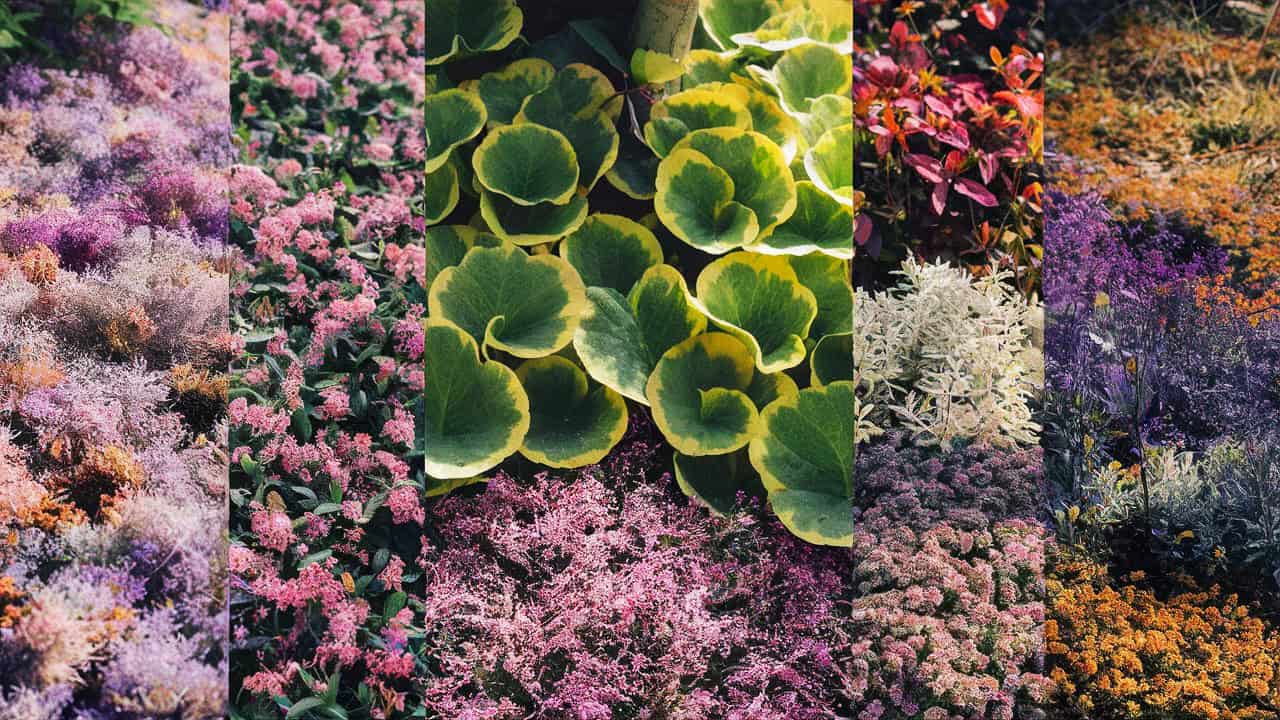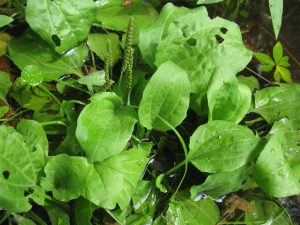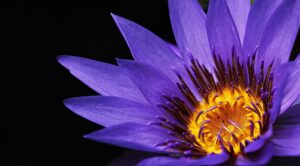Tired of struggling with bare, uninviting spaces in your garden? Ground cover plants are the secret to transforming dull areas into vibrant, low-maintenance oases. From delicate, flowering perennials to hardy, trailing vines, these versatile options can enhance your landscape’s aesthetic appeal while providing practical benefits like weed suppression and erosion control.
Creeping Phlox (Phlox subulata)
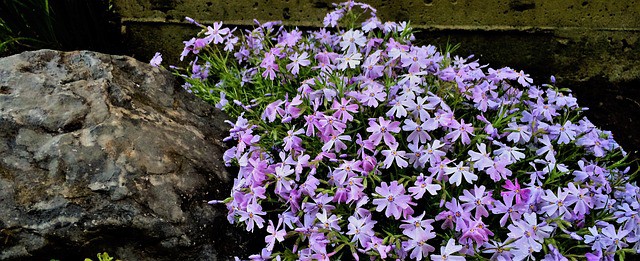
Creeping phlox, also known as moss phlox, is a delightful ground cover that boasts a carpet of colorful blooms in the spring. This hardy perennial thrives in full sun to partial shade and is known for its ability to spread quickly, forming a dense mat of foliage and flowers.
Creeping phlox comes in a variety of hues, including pink, purple, white, and even blue, making it a versatile choice for complementing different color schemes in your garden. Its low-growing habit, typically reaching only 6 inches in height, makes it an excellent option for filling in spaces between stepping stones, cascading over retaining walls, or covering slopes and banks. Creeping phlox is also deer-resistant and drought-tolerant, making it a low-maintenance addition to your landscape.
Angelina Sedum (Sedum rupestre ‘Angelina’)
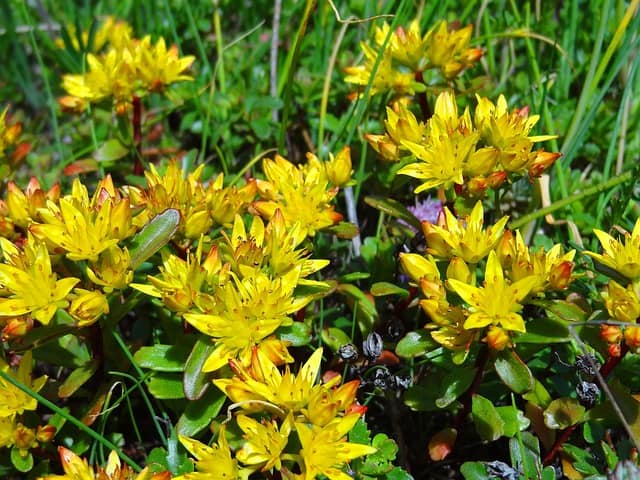
Angelina sedum is a captivating ground cover that adds a vibrant pop of color to any garden. This succulent plant is known for its bright, golden-yellow foliage that transforms into a fiery orange hue in the fall.
Angelina sedum thrives in full sun and well-drained soil, making it an ideal choice for areas with poor soil conditions or hot, dry environments. Its trailing, mat-forming growth habit allows it to spread quickly, covering bare ground and spilling over the edges of raised beds or containers.
Angelina sedum is also highly drought-tolerant and requires minimal maintenance, making it a hassle-free addition to your landscape. Its unique color and texture can create striking contrasts when combined with other ground cover plants or used as a standalone feature.
Nepeta (Nepeta x faassenii)
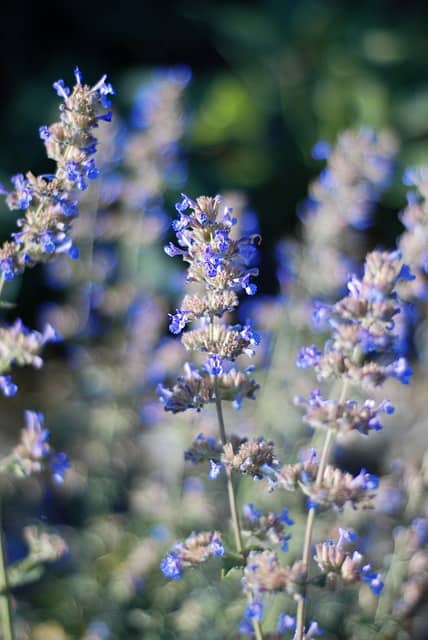
Nepeta, commonly known as catmint, is a fragrant and versatile ground cover that offers a wealth of benefits. This perennial plant produces clusters of small, lavender-blue flowers that bloom profusely throughout the growing season, attracting pollinators such as bees and butterflies to your garden.
Nepeta’s aromatic foliage, which emits a pleasant minty scent when brushed against, also makes it a deer-resistant option. This ground cover is adaptable to a range of soil types and light conditions, thriving in full sun to partial shade. Its low-growing, spreading habit, typically reaching 12-18 inches in height, makes it an excellent choice for covering large areas, spilling over walls, or creating a soft, textural border. Nepeta’s easy maintenance and drought tolerance make it a reliable and rewarding addition to any landscape.
Creeping Thyme (Thymus serpyllum): Creeping thyme is a delightful ground cover that offers a unique combination of functionality and beauty. This fragrant, low-growing perennial is known for its tiny, vibrant flowers that bloom in shades of pink, purple, or white, creating a stunning carpet of color. Creeping thyme thrives in full sun and well-drained soil, making it a resilient choice for areas with poor soil conditions or hot, dry environments. Its dense, mat-forming growth habit allows it to spread quickly, covering bare ground and creating a lush, textural surface.
Creeping thyme is also highly drought-tolerant and requires minimal maintenance, making it an ideal choice for low-water gardens or areas with limited access to irrigation. Its aromatic foliage and ability to withstand foot traffic make it a practical and visually appealing ground cover for pathways, between stepping stones, or as a lawn alternative.
Wall Germander (Teucrium chamaedrys)

Wall germander is a versatile and resilient ground cover that thrives in a variety of garden settings. This low-growing, evergreen perennial is known for its dense, mat-forming growth habit, which allows it to quickly spread and cover bare ground. Wall germander’s small, glossy green leaves and delicate purple-pink flowers create a visually appealing and textural ground cover that complements both formal and informal garden designs. This plant is particularly well-suited for areas with poor soil conditions, as it can tolerate dry, rocky, or sandy environments.
Wall germander’s drought tolerance and ability to withstand foot traffic make it an excellent choice for pathways, between stepping stones, or as a low-maintenance alternative to traditional lawn. Its compact size, typically reaching only 6-12 inches in height, also makes it an ideal option for edging beds, spilling over walls, or cascading down slopes.
Creeping Juniper (Juniperus horizontalis): Creeping juniper is a hardy, evergreen ground cover that offers a unique and textural addition to any landscape. This low-growing, spreading conifer is known for its dense, mat-forming growth habit and its ability to thrive in a wide range of soil types and light conditions.
Creeping juniper’s distinctive blue-green or silvery-green foliage provides year-round interest, with some cultivars even displaying a purple or bronze hue in the winter months. This ground cover is particularly well-suited for hot, dry, and exposed areas, as it is highly drought-tolerant and can withstand harsh environmental conditions.
Creeping juniper’s trailing, horizontal growth pattern makes it an excellent choice for covering slopes, cascading over retaining walls, or filling in spaces between stepping stones. Its low-maintenance nature and ability to suppress weeds make it a practical and visually appealing addition to any landscape.
Rock Cotoneaster (Cotoneaster horizontalis)
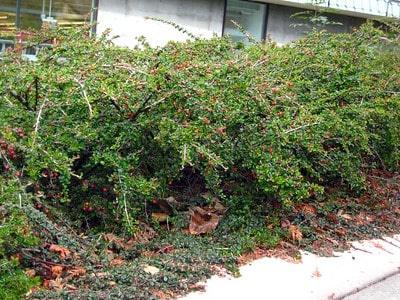
Rock cotoneaster is a versatile and eye-catching ground cover that offers a unique and textural element to any garden. This deciduous, spreading shrub is known for its distinctive, horizontal branching pattern and its small, glossy green leaves that turn vibrant shades of red, orange, and purple in the fall.
Rock cotoneaster’s delicate white flowers, which bloom in the spring, are followed by clusters of small, red berries that provide additional visual interest and attract birds to the garden. This ground cover thrives in full sun to partial shade and can tolerate a wide range of soil types, making it a resilient choice for challenging growing conditions.
Rock cotoneaster’s low-growing, spreading habit, typically reaching only 12-24 inches in height, allows it to cover large areas and spill over walls or slopes, creating a lush, cascading effect. Its ability to suppress weeds and its relatively low maintenance requirements make it an excellent choice for ground cover applications.
Bunchberry (Cornus canadensis)
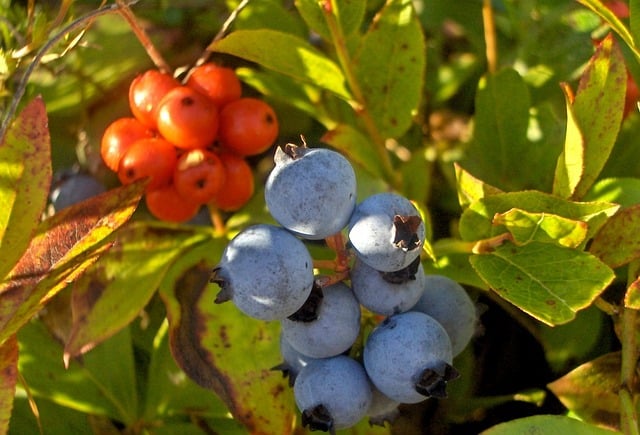
Bunchberry, also known as dwarf dogwood, is a delightful and unique ground cover that offers a touch of woodland charm to any garden. This low-growing, herbaceous perennial is native to North America and is known for its distinctive, four-petaled white flowers that bloom in the spring, followed by clusters of bright red berries in the summer.
Bunchberry’s lush, green foliage, which turns a stunning red or purple in the fall, provides year-round visual interest. This ground cover is particularly well-suited for shaded, moist environments, thriving in areas with partial to full shade and well-drained, acidic soil.
Bunchberry’s compact, mat-forming growth habit allows it to spread quickly and cover bare ground, making it an excellent choice for woodland gardens, under the canopy of trees, or as a low-maintenance alternative to traditional lawn. Its ability to suppress weeds and its tolerance for foot traffic make it a practical and visually appealing ground cover option.
Spotted Deadnettle (Lamium maculatum)
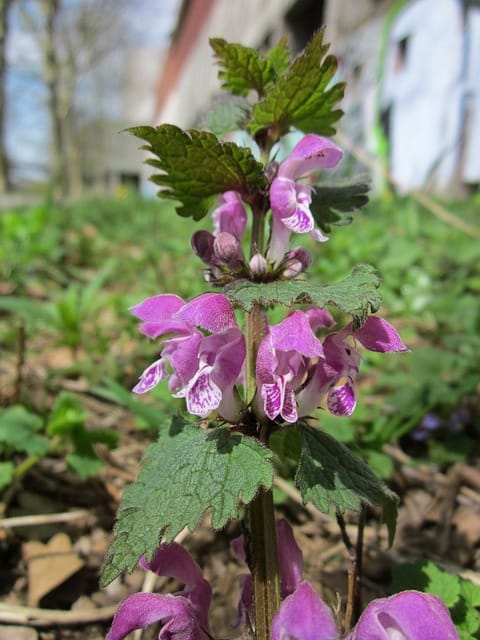
Spotted deadnettle, also known as dead nettle, is a vibrant and versatile ground cover that can add a touch of whimsy to any garden. This perennial plant is known for its distinctive, variegated foliage, which features green leaves with silvery-white markings that create a striking contrast.
Spotted deadnettle’s clusters of pink, purple, or white flowers further enhance its visual appeal, blooming profusely throughout the growing season. This ground cover thrives in partial to full shade, making it an excellent choice for areas with limited sunlight, such as under trees or along the edges of wooded areas.
Spotted deadnettle’s trailing, mat-forming growth habit allows it to spread quickly and cover bare ground, while its ability to tolerate foot traffic and suppress weeds makes it a practical and low-maintenance addition to your landscape. Its versatility and eye-catching appearance make spotted deadnettle a popular choice for edging beds, spilling over walls, or creating a lush, textural ground cover.
Sweet Woodruff (Galium odoratum)
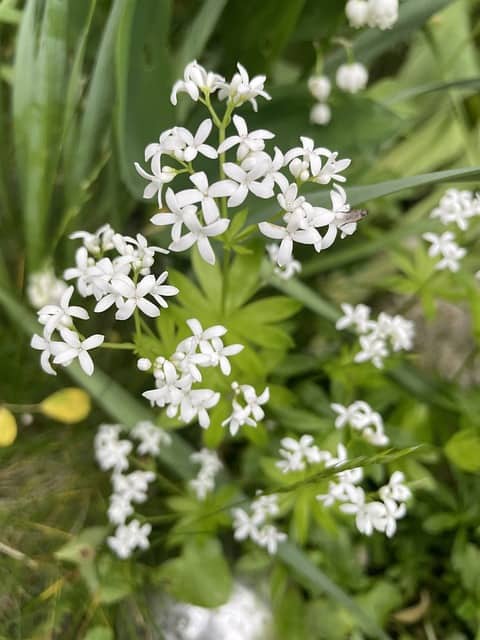
Sweet woodruff is a delightful and fragrant ground cover that can transform shaded areas into lush, inviting spaces. This perennial plant is known for its whorled, bright green leaves and its clusters of small, white flowers that bloom in the spring, emitting a sweet, vanilla-like scent.
Sweet woodruff thrives in partial to full shade, making it an ideal choice for woodland gardens, under the canopy of trees, or in areas with limited sunlight. Its low-growing, mat-forming habit allows it to spread quickly and cover bare ground, while its ability to suppress weeds and tolerate foot traffic make it a practical and versatile ground cover option.
Sweet woodruff’s delicate appearance and aromatic foliage can create a sense of tranquility and charm in any garden setting. Its adaptability to a range of soil types and its relatively low maintenance requirements further enhance its appeal as a ground cover plant.
Liverleaf (Anemone americana)
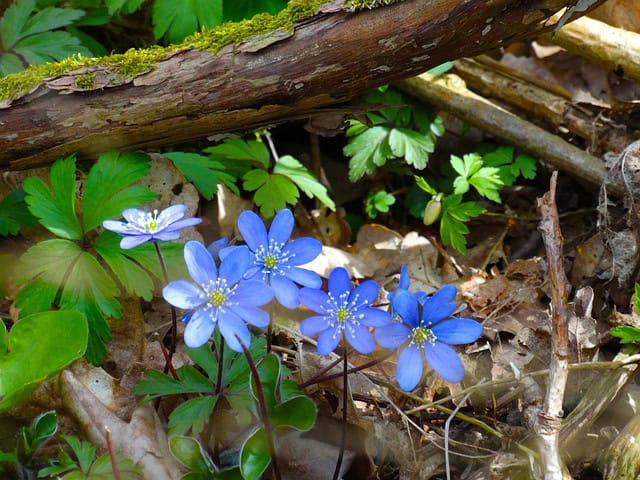
Liverleaf, also known as hepatica, is a delicate and enchanting ground cover that adds a touch of woodland elegance to any garden. This early-blooming perennial is known for its delicate, three-lobed leaves that resemble the shape of a liver, which is where it gets its common name.
Liverleaf’s charming, daisy-like flowers, which can range in color from white to pink to lavender, emerge in the spring, often before the leaves fully unfurl. This ground cover thrives in partial to full shade, making it an excellent choice for shaded areas or under the canopy of trees.
Liverleaf’s low-growing, mat-forming habit allows it to spread and cover bare ground, while its ability to suppress weeds and tolerate foot traffic make it a practical and visually appealing addition to any landscape. Its delicate appearance and early spring blooms can create a sense of wonder and delight in any garden.
Interrupted Fern (Osmunda claytoniana)
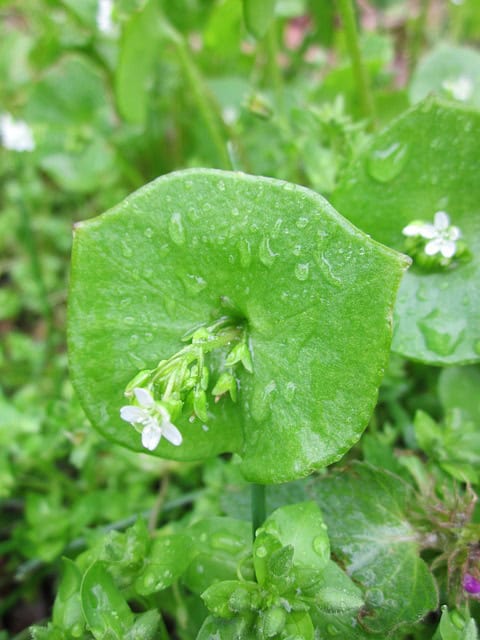
Interrupted fern is a unique and eye-catching ground cover that can add a touch of lush, woodland charm to any garden. This deciduous fern is known for its distinctive, bipinnately compound fronds that emerge in the spring, unfurling to reveal a striking, interrupted pattern of fertile and sterile pinnae.
Interrupted fern thrives in partial to full shade, making it an ideal choice for shaded areas, woodland gardens, or under the canopy of trees. Its low-growing, clumping habit allows it to spread and cover bare ground, while its ability to tolerate foot traffic and suppress weeds make it a practical and visually appealing ground cover option. I
nterrupted fern’s lush, green foliage provides year-round interest, with the fertile pinnae producing spores in the summer, adding an extra layer of visual intrigue. This ground cover’s adaptability to a range of soil types and its relatively low maintenance requirements make it a versatile and rewarding addition to any landscape.
Lenten Rose (Helleborus x hybridus)
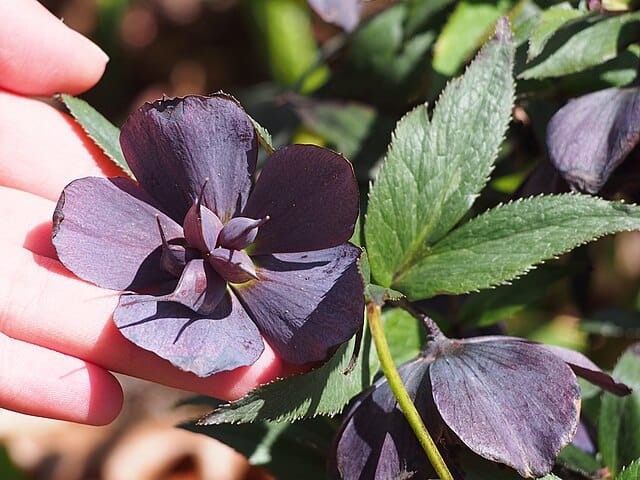
Lenten rose, also known as hellebore, is a captivating and versatile ground cover that can add a touch of elegance to any garden. This evergreen perennial is known for its distinctive, cup-shaped flowers that bloom in a wide range of colors, including white, pink, purple, and even spotted or speckled varieties.
Lenten rose’s leathery, deeply lobed foliage provides year-round interest, with the flowers emerging in late winter or early spring, often before the surrounding plants have awakened from their dormancy. This ground cover thrives in partial to full shade, making it an excellent choice for wooded areas, under the canopy of trees, or in other shaded locations.
Lenten rose’s low-growing, clumping habit allows it to spread and cover bare ground, while its ability to suppress weeds and tolerate foot traffic make it a practical and visually appealing addition to any landscape. Its unique and long-lasting blooms, combined with its resilience and adaptability, make Lenten rose a standout ground cover option.
Ice Plant (Delosperma cooperi)
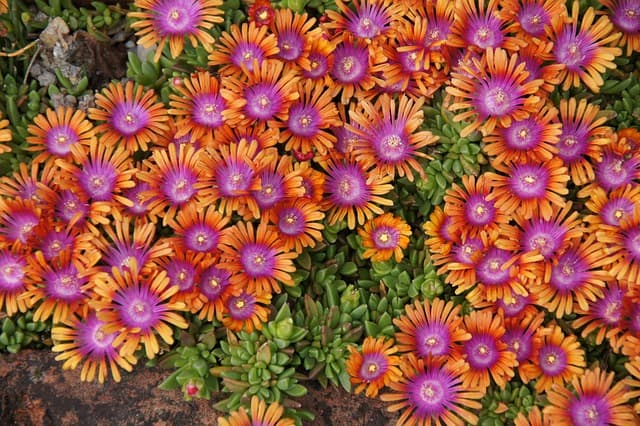
Ice plant, also known as Cooper’s ice plant, is a vibrant and drought-tolerant ground cover that can transform sunny, dry areas into a captivating display. This succulent perennial is known for its vibrant, daisy-like flowers that bloom in shades of pink, purple, or yellow, creating a stunning carpet of color.
Ice plant’s fleshy, green foliage provides a lush, textural contrast, and its ability to thrive in full sun and well-drained soil makes it an excellent choice for hot, dry environments. This ground cover’s low-growing, spreading habit allows it to quickly cover bare ground, while its tolerance for foot traffic and its resistance to weeds make it a practical and low-maintenance addition to any landscape. Ice plant’s unique appearance and its ability to withstand drought conditions make it a standout choice for rock gardens, slopes, or areas with limited water availability.
Candytuft (Iberis sempervirens)
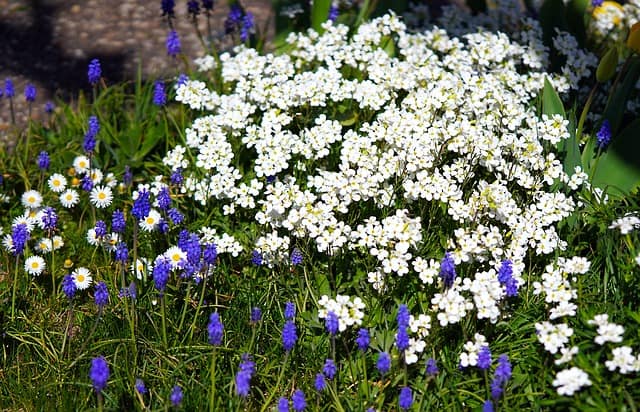
Candytuft is a delightful and versatile ground cover that can add a touch of elegance to any garden. This evergreen perennial is known for its clusters of small, white flowers that bloom profusely in the spring, creating a stunning display.
Candytuft’s low-growing, mat-forming habit allows it to spread quickly and cover bare ground, while its ability to thrive in full sun and well-drained soil makes it a resilient choice for a variety of growing conditions. This ground cover’s dense, mounding growth pattern also makes it an excellent choice for edging beds, spilling over walls, or cascading down slopes.
Candytuft’s relatively low maintenance requirements, including its tolerance for drought and resistance to weeds, further enhance its appeal as a practical and visually appealing addition to any landscape. Its clean, fresh appearance and long-lasting blooms can create a sense of order and refinement in any garden setting.
Common Periwinkle (Vinca minor)
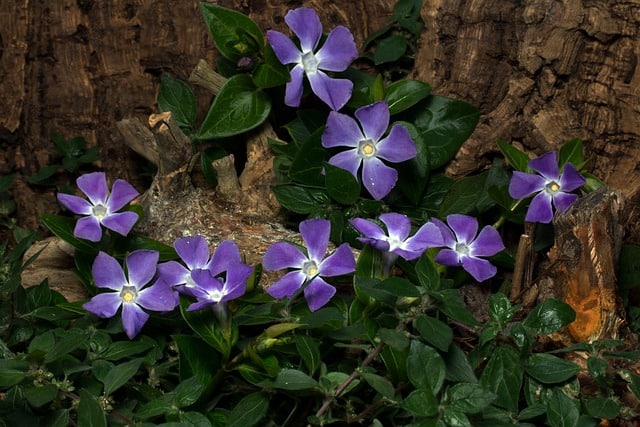
Common periwinkle, also known as creeping myrtle, is a classic and versatile ground cover that can add a touch of lush, evergreen foliage to any garden. This trailing, mat-forming perennial is known for its glossy, dark green leaves and its delicate, violet-blue flowers that bloom in the spring.
Common periwinkle’s low-growing, spreading habit allows it to quickly cover bare ground, while its ability to thrive in partial to full shade makes it an excellent choice for shaded areas or under the canopy of trees. This ground cover’s tolerance for foot traffic and its resistance to weeds further enhance its practicality, allowing it to be used in a variety of applications, such as pathways, slopes, or as a lawn alternative.
Common periwinkle’s evergreen foliage provides year-round interest, and its relatively low maintenance requirements make it a reliable and rewarding addition to any landscape. Its versatility and classic, elegant appearance make it a popular choice for gardeners seeking a lush, low-maintenance ground cover.
Bugleweed (Ajuga reptans)
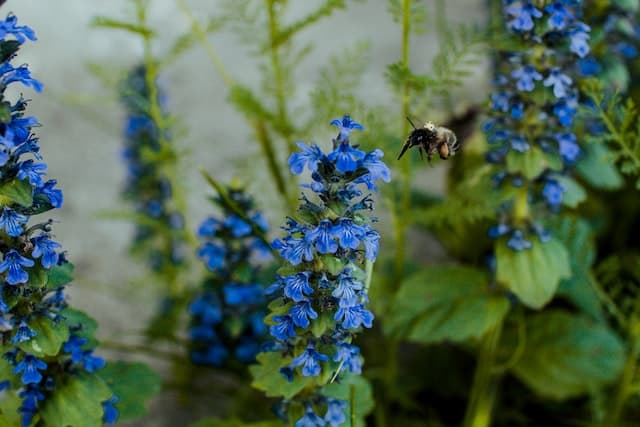
Bugleweed is a versatile and resilient ground cover that can thrive in a variety of garden settings. This low-growing, evergreen perennial is known for its dense, mat-forming growth habit, which allows it to quickly spread and cover bare ground.
Bugleweed’s distinctive, bronze-tinted foliage and its clusters of small, blue or purple flowers create a visually appealing and textural ground cover that complements both formal and informal garden designs. This plant is particularly well-suited for areas with partial to full shade, as it can tolerate lower light conditions.
Bugleweed’s drought tolerance and ability to suppress weeds make it an excellent choice for areas where maintenance is a concern. Its compact size, typically reaching only 6-12 inches in height, also makes it an ideal option for edging beds, spilling over walls, or cascading down slopes. Bugleweed’s adaptability to a range of soil types and its relatively low maintenance requirements further enhance its appeal as a ground cover plant.
Chinese Lantern (Physalis alkekengi)
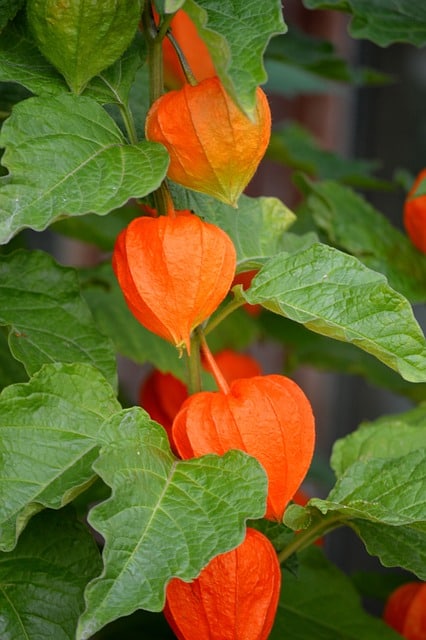
Chinese lantern, also known as winter cherry or bladder cherry, is a unique and eye-catching ground cover that can add a touch of whimsy to any garden. This perennial plant is known for its distinctive, papery, orange-red lantern-like fruit that develops in the fall, providing a striking contrast to the plant’s green foliage.
Chinese lantern’s low-growing, spreading habit allows it to quickly cover bare ground, while its ability to thrive in full sun to partial shade makes it a versatile choice for a variety of garden settings. This ground cover’s tolerance for poor soil conditions and its resistance to pests and diseases further enhance its appeal, making it a relatively low-maintenance addition to any landscape.
Chinese lantern’s unique and long-lasting fruit, combined with its adaptability and resilience, make it a standout ground cover option for gardeners seeking a plant that offers both visual interest and practicality.
Hosta (Hosta spp.)
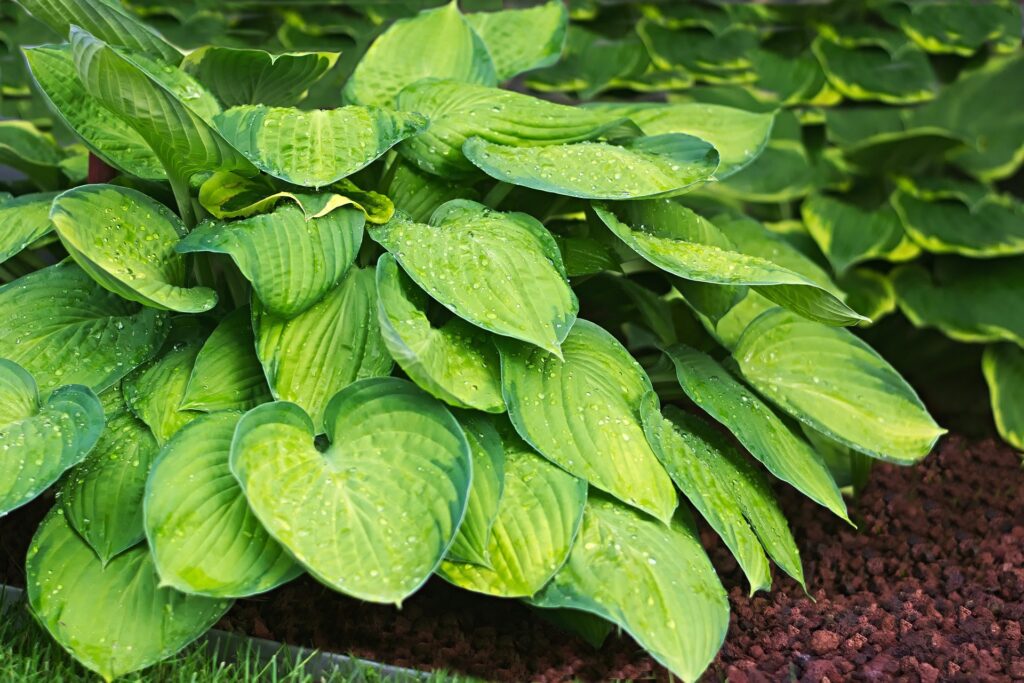
Hosta, also known as plantain lily, is a beloved and versatile ground cover that can add a lush, textural element to shaded areas of the garden. This perennial plant is known for its wide range of foliage colors, shapes, and sizes, with varieties ranging from small, compact mounds to large, dramatic clumps.
Hosta’s broad, often variegated leaves provide a striking contrast to the surrounding plants, while its clusters of delicate, bell-shaped flowers add an extra layer of visual interest. This ground cover thrives in partial to full shade, making it an excellent choice for wooded areas, under the canopy of trees, or in other shaded locations.
Hosta’s low-growing, spreading habit allows it to cover bare ground, while its tolerance for foot traffic and its resistance to weeds make it a practical and visually appealing addition to any landscape. With its diverse range of cultivars and its adaptability to a variety of growing conditions, hosta is a versatile and rewarding ground cover option for gardeners.
Basket-of-Gold (Aurinia saxatilis)
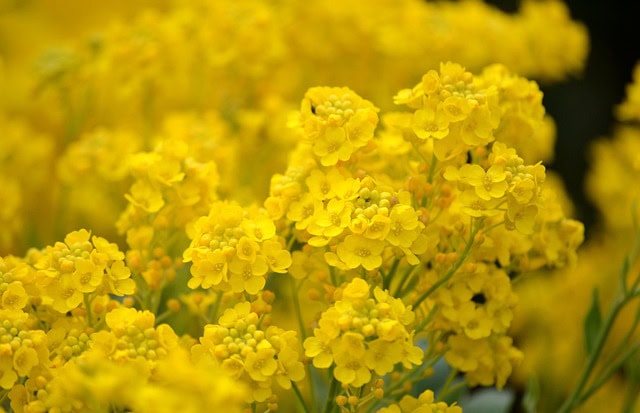
Basket-of-gold, also known as rock madwort, is a vibrant and drought-tolerant ground cover that can add a touch of sunny charm to any garden. This perennial plant is known for its clusters of bright yellow flowers that bloom profusely in the spring, creating a stunning display.
Basket-of-gold’s low-growing, mat-forming habit allows it to quickly cover bare ground, while its ability to thrive in full sun and well-drained soil makes it an excellent choice for hot, dry environments. This ground cover’s silvery-green foliage provides a lush, textural contrast to the vibrant blooms, and its tolerance for foot traffic and resistance to weeds further enhance its practicality.
Basket-of-gold’s unique appearance and its ability to withstand drought conditions make it a standout choice for rock gardens, slopes, or areas with limited water availability. Its relatively low maintenance requirements and its long-lasting spring display make it a rewarding addition to any landscape.
Amethyst in Snow (Centaurea Montana ‘Amethyst in Snow’)
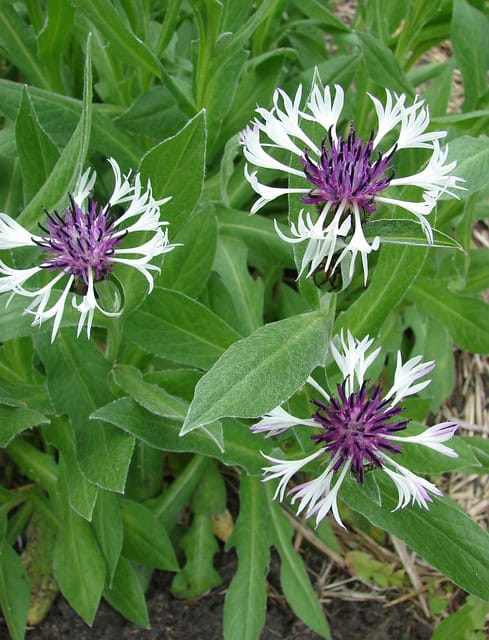
Amethyst in Snow, a cultivar of the perennial cornflower, is a captivating ground cover that can add a touch of whimsy and elegance to any garden. This unique plant is known for its striking, bicolored flowers that feature a vibrant, amethyst-purple center surrounded by a delicate, white fringe.
Amethyst in Snow’s low-growing, clumping habit allows it to spread and cover bare ground, while its ability to thrive in full sun to partial shade makes it a versatile choice for a variety of garden settings. This ground cover’s silvery-green foliage provides a lush, textural contrast to the stunning blooms, and its tolerance for drought and poor soil conditions further enhance its appeal.
Amethyst in Snow’s long-lasting flowers, which bloom from late spring through summer, create a captivating display that can elevate any landscape. Its unique appearance and adaptability make it a standout ground cover option for gardeners seeking a plant that combines visual interest with practicality.
Creeping Liriope (Liriope spicata)

Creeping liriope, also known as monkey grass, is a resilient and versatile ground cover that can add a touch of lush, grass-like foliage to any garden. This perennial plant is known for its dense, mat-forming growth habit, which allows it to quickly spread and cover bare ground.
Creeping liriope’s narrow, strap-like leaves provide a textural contrast to surrounding plants, and its clusters of small, purple or white flowers that bloom in the late summer add an extra layer of visual interest. This ground cover thrives in a wide range of growing conditions, including full sun to partial shade and a variety of soil types.
Creeping liriope’s tolerance for foot traffic and its resistance to weeds make it a practical and low-maintenance addition to any landscape, whether used as a lawn alternative, for edging beds, or as a ground cover in shaded areas. Its adaptability and resilience, combined with its ability to provide year-round interest, make creeping liriope a standout choice for gardeners seeking a versatile and reliable ground cover.
Pachysandra (Pachysandra terminalis)
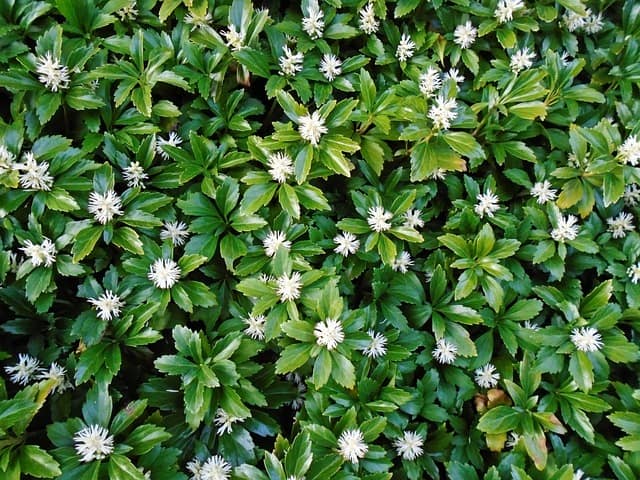
Pachysandra, also known as Japanese spurge, is a classic and dependable ground cover that can thrive in shaded areas of the garden. This evergreen perennial is known for its dense, mat-forming growth habit, which allows it to quickly spread and cover bare ground.
Pachysandra’s glossy, dark green leaves provide a lush, textural contrast to surrounding plants, and its small, white flowers that bloom in the spring add a touch of delicate beauty. This ground cover is particularly well-suited for areas with partial to full shade, as it can tolerate lower light conditions.
Pachysandra’s tolerance for foot traffic and its resistance to weeds make it a practical and low-maintenance addition to any landscape, whether used as a lawn alternative, for edging beds, or as a ground cover in wooded areas. Its evergreen foliage provides year-round interest, and its adaptability to a range of soil types further enhance its appeal as a reliable and versatile ground cover option.
English Ivy (Hedera helix)
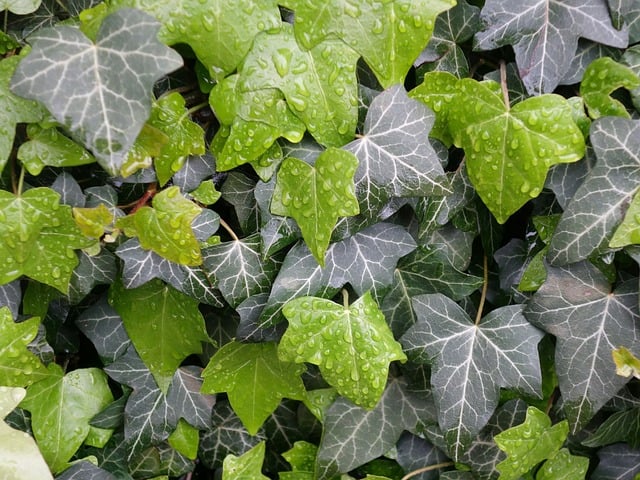
English ivy is a classic and versatile ground cover that can add a touch of lush, evergreen foliage to any garden. This trailing, vining perennial is known for its distinctive, lobed leaves that can range in color from deep green to variegated varieties.
English ivy’s dense, mat-forming growth habit allows it to quickly spread and cover bare ground, making it an excellent choice for areas where a low-maintenance, trailing ground cover is desired. This plant is particularly well-suited for shaded areas, as it can thrive in partial to full shade.
English ivy’s tolerance for foot traffic and its resistance to weeds further enhance its practicality, allowing it to be used in a variety of applications, such as covering slopes, spilling over walls, or as a ground cover in wooded areas.
While English ivy can be an aggressive grower, its adaptability to a range of soil types and its ability to provide year-round interest make it a popular choice for gardeners seeking a reliable and visually appealing ground cover option.
Lamb’s Ear (Stachys byzantina)
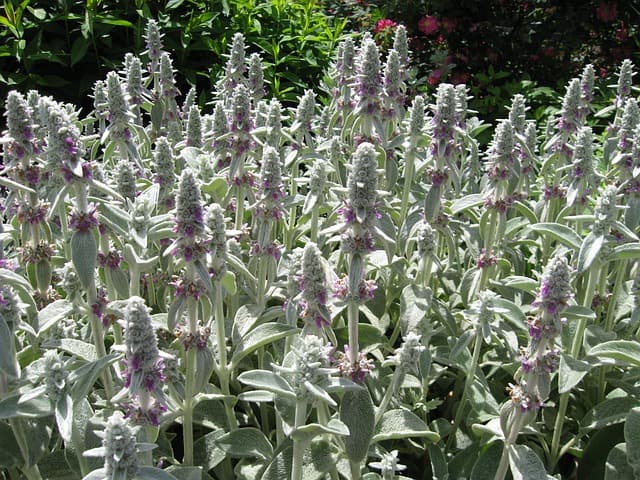
Lamb’s ear is a charming and textural ground cover that can add a unique and whimsical element to any garden. This perennial plant is known for its soft, velvety, silver-gray leaves that resemble the fuzzy ears of a lamb, hence the common name.
Lamb’s ear’s low-growing, spreading habit allows it to quickly cover bare ground, while its ability to thrive in full sun to partial shade makes it a versatile choice for a variety of garden settings. This ground cover’s tolerance for drought and poor soil conditions further enhance its appeal, as it can flourish in challenging environments where other plants may struggle.
Lamb’s ear’s distinctive foliage provides a striking contrast to surrounding plants, and its occasional spikes of small, purple flowers add a touch of whimsy to the display. Its unique texture, adaptability, and low-maintenance requirements make lamb’s ear a standout ground cover option for gardeners seeking a plant that combines visual interest with practicality.
Creeping Thyme (Thymus serpyllum)
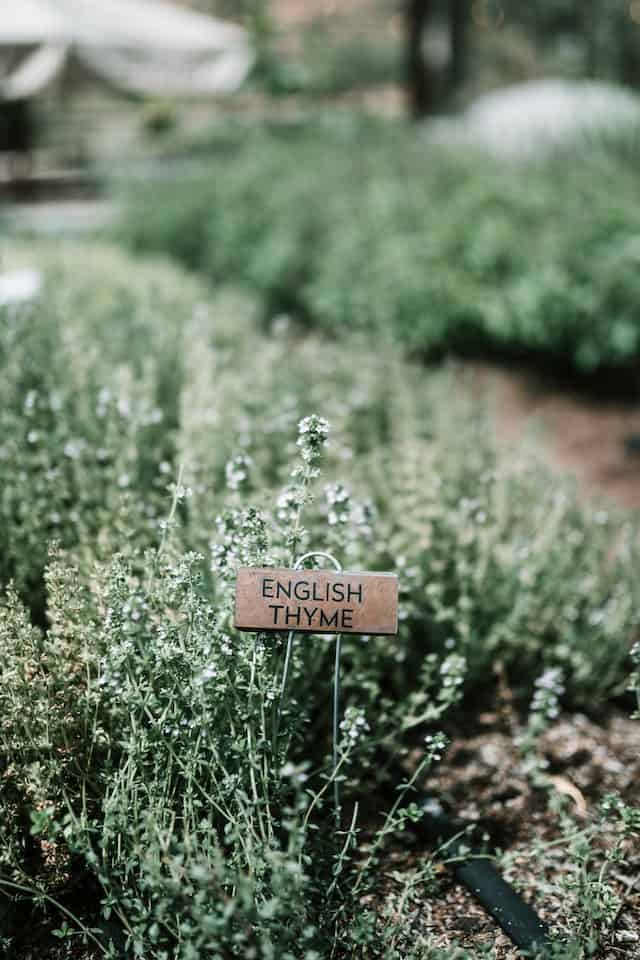
Creeping thyme is a fragrant and resilient ground cover that can add a touch of aromatic charm to any garden. This low-growing, mat-forming perennial is known for its small, evergreen leaves and its clusters of tiny, purple or pink flowers that bloom in the summer.
Creeping thyme’s ability to thrive in full sun and well-drained soil makes it an excellent choice for hot, dry areas, while its tolerance for foot traffic and its resistance to weeds further enhance its practicality. This ground cover’s dense, spreading habit allows it to quickly cover bare ground, and its ability to release a pleasant, herbal scent when crushed underfoot adds an extra layer of sensory delight.
Creeping thyme’s versatility, with uses ranging from pathways and rock gardens to spilling over walls or edging beds, make it a popular and rewarding ground cover option for gardeners seeking a plant that combines visual appeal, fragrance, and low-maintenance performance.
Lady’s Mantle (Alchemilla)
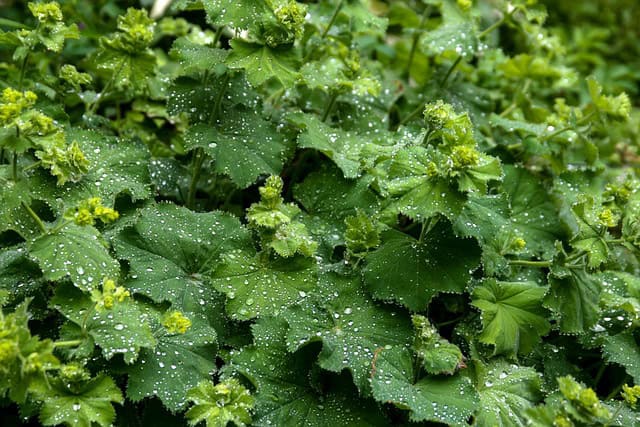
Lady’s mantle is a graceful and distinctive ground cover that can add a touch of elegance to any garden. This perennial plant is known for its rounded, scalloped leaves that shimmer with a delicate, dew-like appearance, creating a captivating visual effect.
Lady’s mantle’s low-growing, mounding habit allows it to spread and cover bare ground, while its ability to thrive in partial to full shade makes it an excellent choice for wooded areas or other shaded locations. This ground cover’s clusters of small, chartreuse flowers that bloom in the summer add an extra layer of visual interest, complementing the lush, textural foliage.
Lady’s mantle’s tolerance for a range of soil types and its resistance to pests and diseases further enhance its appeal as a practical and low-maintenance addition to any landscape. Its unique appearance and adaptability make lady’s mantle a standout ground cover option for gardeners seeking a plant that combines beauty, versatility, and ease of care.
Honeysuckle (Lonicera)
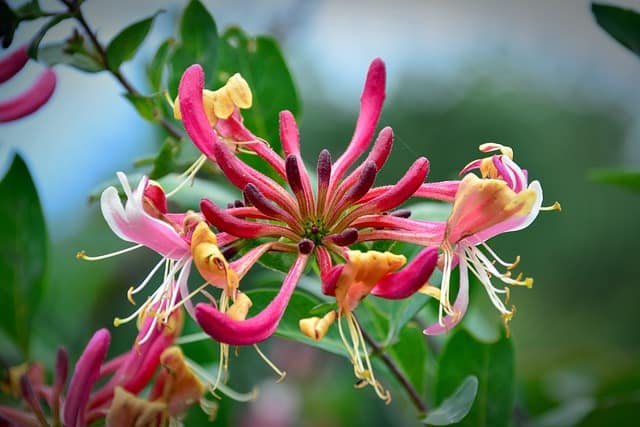
Honeysuckle is a versatile and fragrant ground cover that can add a touch of whimsy and charm to any garden. This trailing, vining perennial is known for its clusters of tubular, sweetly scented flowers that bloom in a variety of colors, including white, yellow, pink, and red.
Honeysuckle’s ability to quickly spread and cover bare ground, combined with its tolerance for a range of growing conditions, make it a practical and visually appealing ground cover option. This plant is particularly well-suited for areas where a trailing, cascading ground cover is desired, such as spilling over walls, covering slopes, or as a ground cover in wooded areas.
Honeysuckle’s tolerance for partial shade and its resistance to pests and diseases further enhance its appeal, while its fragrant blooms provide an added sensory delight. With its versatility, resilience, and unique floral display, honeysuckle is a standout ground cover choice for gardeners seeking a plant that combines beauty, practicality, and low-maintenance performance.
Bishop’s Cap (Epimedium)

Bishop’s cap, also known as barrenwort, is a delicate and graceful ground cover that can add a touch of elegance to shaded areas of the garden. This perennial plant is known for its distinctive, heart-shaped leaves that emerge in the spring with a bronze or reddish hue, eventually transitioning to a lush, green color.
Bishop’s cap’s low-growing, spreading habit allows it to quickly cover bare ground, while its ability to thrive in partial to full shade makes it an excellent choice for wooded areas or other shaded locations. This ground cover’s clusters of small, delicate flowers that bloom in the spring add an extra layer of visual interest, complementing the lush foliage.
Bishop’s cap’s tolerance for a range of soil types and its resistance to pests and diseases further enhance its appeal as a practical and low-maintenance addition to any landscape. Its unique appearance and adaptability make bishop’s cap a standout ground cover option for gardeners seeking a plant that combines beauty, versatility, and ease of care.
Creeping Jenny (Lysimachia nummularia)

Creeping Jenny, also known as moneywort, is a vibrant and trailing ground cover that can add a touch of lush, golden-green foliage to any garden. This perennial plant is known for its distinctive, round leaves that create a dense, mat-forming growth habit, allowing it to quickly spread and cover bare ground.
Creeping Jenny’s ability to thrive in full sun to partial shade, combined with its tolerance for a range of soil types, make it a versatile and practical ground cover option. This plant’s trailing, cascading growth habit also makes it well-suited for spilling over walls, covering slopes, or as a ground cover in shaded areas.
Creeping Jenny’s small, yellow flowers that bloom in the summer add an extra layer of visual interest, while its resistance to pests and diseases further enhance its appeal as a low-maintenance addition to any landscape. With its vibrant foliage, adaptability, and trailing growth habit, creeping Jenny is a standout ground cover choice for gardeners seeking a plant that combines beauty, practicality, and ease of care.


